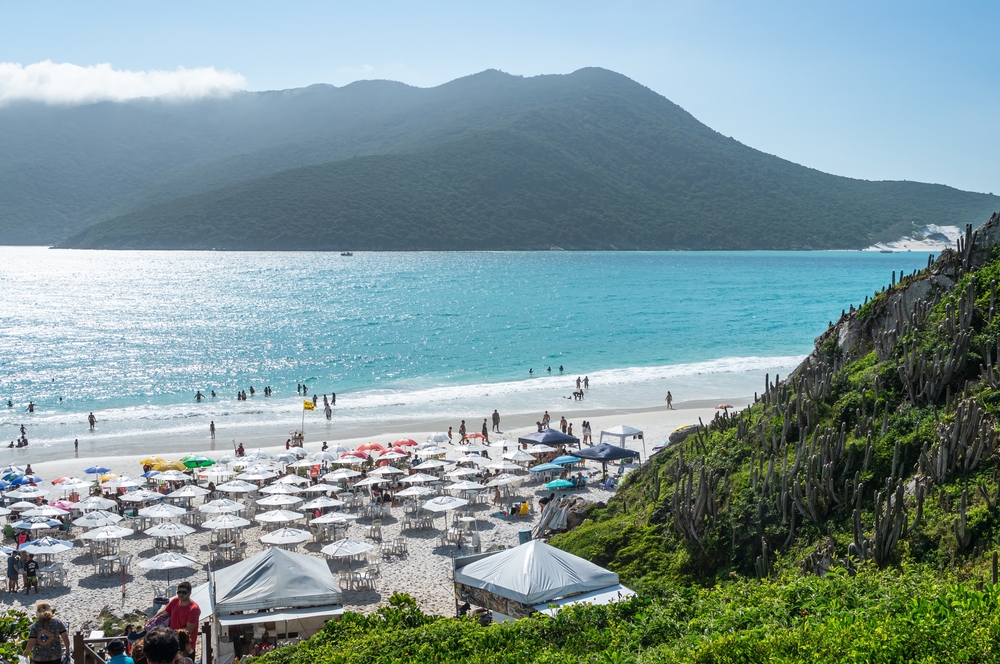Discovered in 2006 and originally named Tupi, the Lula field, situated in the Santos Basin off the coast of Brazil, represents one of the country’s most significant petroleum discoveries. The oil fields have transformed the energy landscape in Brazil, catapulting it into the spotlight as a key player in global oil production. The Lula field’s vast reserves are part of the broader “pre-salt” layer, so named for the geological formation beneath a layer of salt, which spans approximately 800 kilometers along the Brazilian coast.
The extraction of oil from the Tupi Oil Fields has been a significant breakthrough for the Brazilian economy, providing not only a new revenue stream but also a stimulus for technological development. The fields’ operations stand as a testament to the innovative advancements in offshore drilling and deep-water exploration. As Brazil’s national oil company, Petrobras has played a central role in the development of Tupi, utilizing new technologies and entering into strategic partnerships to optimize the extraction process.
Table of Content
ToggleKey Takeaways
- The Tupi Oil Fields are integral to Brazil’s rise as a major oil producer.
- Advanced technologies and Petrobras’ strategic actions drive extraction success.
- Tupi’s development has significant economic and technological impacts on Brazil.
Historical Discovery and Development of the Tupi Fields
The Tupi Field, situated in Brazil’s burgeoning offshore pre-salt region known as the Santos Basin, represents a pivotal chapter in the history of Brazilian oil exploration and production. After its discovery, the field’s subsequent development has significantly boosted Brazil’s status in the global energy sector.
Discovery of Tupi Field
The Tupi Field was discovered in 2006, which marked a major breakthrough in oil exploration, particularly within the challenging pre-salt geological layers of the Santos Basin. The field’s existence beneath a thick salt layer underscored the technological advancements necessary for its exploitation. Exploration efforts revealed the Tupi Field to be one of the largest deepwater oil accumulations, with this discovery likened to opening a new frontier in hydrocarbon exploration in Brazil.
Tupi Accumulated Production
Since its discovery, the Tupi Field has been under continuous development, shifting from exploration to a full-fledged production phase. A significant milestone was reached with the establishment of Lula Field, formerly known as Tupi, which became a cornerstone of Brazil’s pre-salt oil production. The field’s accumulated production has soared over the years, making it one of the most prolific oil fields within the South Atlantic realm. The advancements in seismic imaging technology have played a crucial role in optimizing the field’s development and increasing the efficiency of oil extraction from the once-elusive pre-salt reserves.
Geological Profile of the Tupi Region
The Tupi Oil Field, positioned offshore Brazil in the Santos Basin, is underlain by a complex geological foundation that has facilitated significant hydrocarbon accumulation. This foundation is characterized by a pre-salt sequence that has proven to be one of the most productive petroleum systems in Brazil.
Pre-Salt Geological Formation
The pre-salt geological formation refers to the stratigraphic layers beneath a layer of salt, which are predominantly composed of carbonate rocks interbedded with siliciclastic sediments. This geological structure was formed approximately 120 million years ago during the opening of the South Atlantic Ocean. In the context of the Santos Basin and particularly the Tupi Field, the pre-salt section includes a series of carbonate reservoirs situated below a thick salt layer that was deposited after the initial separation of the South American and African continents.
Rock and Sediment Layers
The stratigraphy of the Tupi Field unveils a sequence of rock and sediment layers that are crucial for its reservoir characteristics. Here’s a brief overview:
- Salt Layer: A significant salt deposition, often several hundred meters thick, which is crucial for the entrapment of hydrocarbons beneath it.
- Reservoir Rocks: Primarily carbonates (limestones and dolomites) that have good porosity and permeability, allowing for the storage and flow of oil.
- Seal Rocks: Consist of anhydrite and shale layers that create an impermeable barrier preventing the escape of hydrocarbons.
This combination of seal and reservoir rocks has been fundamental in enabling the Tupi Field to become a prominent oil-producing region. The field’s offshore location adds another layer of complexity to the exploration and production activities, necessitating advanced technological approaches for extraction.
Technological Advancements in Drilling
The Tupi oil fields, with their substantial reserves nestled beneath deep waters and challenging geologic layers, have driven significant innovations in drilling technologies. These advancements are not only overcoming the pronounced challenges presented by extreme water depths but are also emblematic of the disruptive technologies redefining the industry.
Water Depth Challenges
Brazil’s offshore reservoirs, such as those in the Tupi oil field, present unique challenges due to their location beneath waters that can extend nearly 7,000 feet deep. Conventional drilling techniques were insufficient for these depths, necessitating the development of advanced dynamic positioning systems and dual-gradient drilling methods to maintain drilling stability and precision.
Disruptive Technologies
In response to these harsh conditions, disruptive technologies have been a cornerstone. The implementation of advanced seismic imaging has significantly enhanced the clarity and accuracy of subsurface models in Tupi’s development. Moreover, the integration of seabed logging tools and Automated Drilling Rigs (ADR) have led to safer, faster, and more efficient drilling operations, thereby increasing productivity and reducing environmental impact.
Economic Impact on Brazil
The discovery and development of the Tupi Oil Fields have significantly bolstered Brazil’s status in the global energy market, marking a milestone for the country’s economic growth and job creation.
Contribution to Brazilian Economy
Brazil has experienced remarkable economic benefits from the Tupi oil fields, initially discovered in 2006. The Tupi Field, now known as the Lula Field, is a substantial contributor to the country’s oil reserves, which were estimated at around 12 billion barrels. With the Tupi field alone, an additional 8 billion barrels were anticipated. The field’s production has not only helped Brazil reduce its reliance on imported oil but also positioned it as a significant player in the oil export market.
Oil Revenues: Increased Exports and Foreign Investment
- Exports: The rise in oil production has enabled Brazil to increase its oil exports, providing a valuable boost to the country’s trade balance.
- Foreign Direct Investment (FDI): The potential and profitability of the Tupi fields have attracted significant foreign investment, propelling technological advances and infrastructure growth in the energy sector.
Job Creation and Industry Growth
The impact of the Tupi oil fields extends beyond just revenue; it has a tangible effect on Brazil’s labor market and industrial capabilities.
Employment Opportunities:
- Direct Employment: Exploration, drilling, and extraction activities at the Tupi fields have created a plethora of jobs, ranging from high-skilled positions like geoscientists and engineers to various supporting roles in the industry.
- Indirect Employment: The multiplier effect of oil and gas industry expansions has led to job opportunities in related sectors such as construction, logistics, and services.
Domestic Industry Expansion: The demand for equipment, services, and expertise has encouraged the growth of local industries, sparking a surge in domestic manufacturing and service capabilities which feed into the broader oil and gas sector.
By leveraging the vast resources of the Tupi Oil Fields, Brazil has made significant strides in fortifying its position as a key player in the global oil economy, fostering economic expansion, and generating employment opportunities across multiple sectors.
Environmental Considerations
The Tupi oil fields, located offshore Brazil, pose environmental challenges that must be managed with strategic initiatives. As Brazil strives to balance oil production with environmental stewardship, attention to the sustainability of operations and the impact of offshore drilling is critical.
Offshore Drilling Impacts
Offshore drilling in regions like the Tupi oil fields has inherent environmental risks. One key concern is the potential for oil spills, which can have devastating effects on marine life and ecosystems. The Tupi field also faces issues related to the disposal of drilling by-products and the management of underwater infrastructure, which can disrupt local habitats.
- Potential Environmental Risks:
- Oil spills
- Habitat disruption
- Waste disposal challenges
Moreover, the operation requires careful consideration of the existing stressed lacustrine environment. The Brazilian offshore setting must maintain its delicate balance, which is susceptible to the alterations that accompany extensive offshore oil and gas extraction.
Sustainable Operations Initiatives
Brazilian authorities and operators in the Tupi oil fields have recognized the need for sustainable production methods. Initiatives such as re-injection of carbon dioxide into wells and the use of advanced seismic technologies all play a part in reducing the environmental impact of oil production.
- Sustainability Measures:
- CO2 re-injection
- Adoption of 4D seismic technologies
- Monitoring of production systems
These measures aim to ensure that oil extraction does not come at an unmanageable cost to the environment. By prioritizing the reduction of CO2 emissions and minimizing the ecological footprint, the Tupi oil fields endeavor to set a precedent for responsible resource management in offshore Brazil.
The Role of Petrobras and Partnerships
Petrobras, as Brazil’s national oil company, has played a pivotal role in the exploration and development of the Tupi Oil Fields, and strategic partnerships with international firms have been central to maximizing the fields’ potential.
Petrobras’s Role in Tupi
Petrobras, officially known as Petróleo Brasileiro SA, is at the forefront of exploration and development activities in the Tupi oil fields, located in the pre-salt layer of Brazil’s Santos Basin. They have leveraged cutting-edge technology to tap into these substantial reserves. The company’s expertise in deepwater drilling has established Brazil as a prominent player in the global energy market.
Collaboration with International Companies
The complexity and costs associated with drilling in the pre-salt layer have driven Petrobras to form strategic partnerships with international oil companies. These collaborations, including ties with Shell Brasil and Petrogal Brasil, have brought in vital investment, technology sharing, and risk mitigation, bolstering Brazil’s capacity to develop these challenging reserves. These alliances reflect a trend wherein the sharing of expertise and resources is a key aspect of modern energy resource development.
Global Oil Market Influence
The Tupi oil fields have significantly bolstered Brazil’s standing in the global oil market, creating a dynamic shift in the production hierarchy and challenging longstanding oil producers.
Tupi’s Place in World Oil Production Ranking
The Tupi Field, situated in the Santos Basin off the coast of Brazil, represents a significant find in the South Atlantic. With estimates suggesting the field contains between 5-8 billion barrels of oil reserves, the discovery has propelled Brazil into a higher echelon in the world oil production ranking. The field’s output, which began influencing global supply shortly after production commenced, has placed Brazil prominently on the world stage, directly affecting the country’s competition in the global market.
Competition with Other Oil-Producing Nations
Brazil’s ascent in the oil production rankings has naturally altered its competitive stance, especially vis-à-vis countries like Venezuela, Colombia, the United Kingdom, and Argentina. The uptick in Brazil’s oil production due to the Tupi fields has intensified competition, particularly in the South American region. Venezuela, with its vast oil reserves, has long led the regional oil production but has faced economic and political challenges that Brazil’s stable increase in output has capitalized upon. Colombia and Argentina, both solid producers with smaller reserves, also find themselves in a strategic balancing act as Brazil’s emergence applies pressure on their market shares. However, it’s worth noting that the United Kingdom, with its mature North Sea oil fields, operates in a different market dynamic, being more integrated with European energy needs, which modulates direct competition with Brazil.
Capacities and Infrastructure
The Tupi oil field, now referred to as the Lula field, represents a significant part of Brazil’s oil production capability with an intricate network of infrastructure and storage systems in place.
FPSO Vessels in Operation
Floating Production, Storage and Offloading (FPSO) vessels are critical components in the oil extraction process at the Tupi fields. These vessels, such as the Cidade de Angra dos Reis, are stationed directly over the oil fields. They are capable of extracting, processing, and storing the crude oil before offloading. The P-66, a significant FPSO in the region, came into operation to further expand the extraction capacity. With state-of-the-art processing facilities on board, it dramatically increases the operational efficiency and production rate.
Wells and Storage Capacities
The Tupi oil field is served by multiple wells, each contributing to the total oil production capacity. These wells are drilled with precision to maximize extraction rates. The storage capacity component is equally vital, with FPSO vessels like the Cidade de Angra dos Reis capable of storing large amounts of oil. Specifically, FPSOs such as the P-66 are designed to handle a significant storage capacity, ensuring a continuous production cycle and aiding in the transportation process to optimize the supply chain.
Challenges and Solutions in Extraction
The extraction of oil from Tupi (renamed to Lula) fields presents significant hurdles due to the ultra-deep waters and pre-salt layers. Innovative technologies and solutions are essential to successfully tap into these substantial reserves.
Ultra-Deep Water Extraction
In the realm of ultra-deep water extraction, the Tupi oil fields, situated nearly 300 km off the coast of Brazil, demand specialized technologies due to the water depth and complexity of the reservoirs. Floating Production, Storage, and Offloading (FPSO) units are a fundamental technology in this context. Operating in depths that can exceed 2,000 meters, these vessels are equipped to handle the harsh conditions and the distance from shore.
To address the specific challenges of ultra-deep waters, dynamic positioning systems help maintain the necessary stability for operations. Additionally, advanced drilling techniques, such as the use of risers that can withstand high pressure and deep-water conditions, are employed to ensure efficient extraction.
Addressing Pre-Salt Extraction Difficulties
Exploring the pre-salt extraction difficulties entails overcoming the hard, thick salt layers that sit atop the oil reservoirs, which can be up to 2,000 meters thick. The key strategy has been the development of high-precision drilling that can navigate the complex geological formations.
Drilling through pre-salt requires sturdy equipment capable of handling the rock’s abrasiveness. Brazil has met some of these challenges with sophisticated drilling rigs and ships designed for deep-water and pre-salt layers. Chemicals such as calcium sulfates, which can cause scaling, are mitigated by utilizing sulfate removal units to treat the water injected into the wells to maintain pressure.
In essence, a combination of technological innovation and operational excellence is essential for overcoming the challenges present in the extraction process from Brazil’s Tupi fields.
Regulatory and Policy Framework
The transformative regulatory policies in Brazil, particularly during the tenure of President Luiz Inácio Lula da Silva, have had significant implications for the Tupi Oil Fields, framing Brazil’s ascent in the global oil industry.
Brazilian Oil Industry Regulations
The 2010 Brazilian oil regulatory framework redefined the industry, introducing provisions that aimed to increase state control over the newfound pre-salt oil reserves, including those of Tupi (later renamed to Lula). Under President Lula’s administration, there was a shift towards a production sharing agreement model, prioritizing state-owned companies and domestic industry.
- Key Aspects:
- Production sharing contracts for high-potential areas.
- Preference for Petrobras as the sole operator.
- Local content requirements to foster domestic industry.
The regulatory changes indeed created a crowding-out effect, potentially deterring foreign investment by overestimating the attractiveness of Brazil’s pre-salt layers without considering the challenges in extracting deep-water oil reserves.
International Energy Relations
Brazil’s regulatory framework, with its evolving local content policies, had implications for international energy relations. By mandating higher percentages of local content, Brazil strove for technological autonomy and greater participation in the global energy market. They aimed to become a leading voice within international oil politics, leveraging their substantial pre-salt oil reserves.
- Impact on Foreign Relations:
- The framework affected international partnerships and investment flows into Brazil.
- Brazil navigated the tension between attracting foreign investment and promoting national industry.
The corruption scandal involving Petrobras further complicated Brazil’s position, necessitating policy adjustments that struck a balance between maintaining investor confidence and championing local businesses and workforce development.
Future Prospects and Expansion
The Tupi oil fields, representing a significant part of Brazil’s energy sector, are poised for strategic explorations and have robust expansion plans that underscore their promising future.
New Explorations
Brazil is steadfast in advancing its energy frontiers, with new explorations centered on the vast pre-salt layer. The hydrocarbon-rich strata below the salt layers, where Tupi is located, continue to offer opportunities for additional oil field developments. Exploration activities are not just expanding Brazil’s oil reserves but are also cementing the legacy of Tupi as a cornerstone in Brazil’s energy matrix.
Prospects for Tupi Oil Fields
The prospects for Tupi oil fields are closely tied to technological improvements and regulatory advancements. Investment in innovative extraction methods is expected to substantially enhance recovery rates. Combined with supportive policies, Tupi fields are set to remain a central contributor to Brazil’s oil production. This growth trajectory reaffirms Tupi’s status as a key player in the country’s economic fabric, reinforcing a promising future for Brazil’s energy industry.
Frequently Asked Questions
The Tupi oil fields represent a significant chapter in Brazil’s economic story, directly impacting its energy sector and global market standing, while also posing environmental challenges and demanding innovative technological solutions.
What are the economic implications of the Tupi oil fields for Brazil?
The pre-salt discoveries, particularly the Tupi oil fields, have considerable economic implications for Brazil. They have the potential to boost Brazil’s oil production capacity, thereby increasing its export abilities and providing a significant source of revenue.
How has the discovery of the Tupi oil fields affected Brazil’s energy sector?
The discovery of the Tupi oil fields marked a transformative period for Brazil’s energy sector, potentially reducing the country’s dependence on imported oil. This discoverystandards has encouraged the development of local industries and services related to oil exploration and production.
What role do the Tupi oil fields play in Brazil’s position in the global oil market?
The Tupi oil fields play a crucial role in strengthening Brazil’s position in the global oil market. The vast reserves found in the pre-salt layer are projected to place Brazil among the world’s top oil exporters, influencing global oil prices and market dynamics.
What environmental concerns are associated with the extraction of oil from the Tupi oil fields?
Environmental concerns associated with the Tupi oil fields revolve around the deep-water extraction process and its potential impacts on the marine ecosystem. Analysis of offshore oil and gas development in Brazil highlights the need for comprehensive environmental impact assessments to mitigate such concerns.
How does the oil production from the Tupi oil fields compare to other major fields in Brazil?
The Tupi oil fields, also known as the Lula fields, are amongst Brazil’s largest and most productive. Their level of oil production has notably surpassed that of many traditional fields, making them a central focus for the national oil industry.
What technological advancements have been implemented for extracting oil from the Tupi oil fields?
Extracting oil from the Tupi fields involves advanced technology due to the challenging pre-salt layer location deep below the sea floor. These technologies include state-of-the-art drilling techniques and floating production systems designed to operate under high-pressure and high-temperature conditions.













One Response